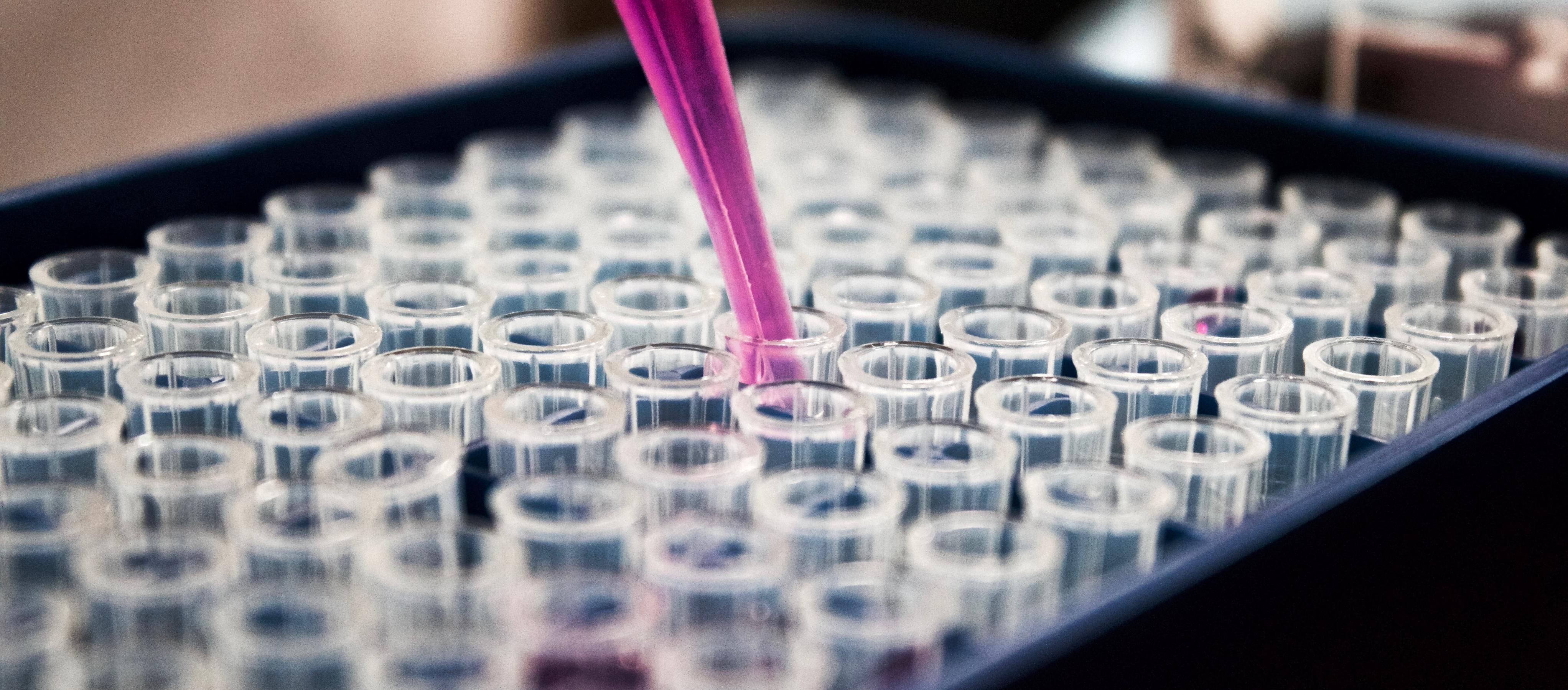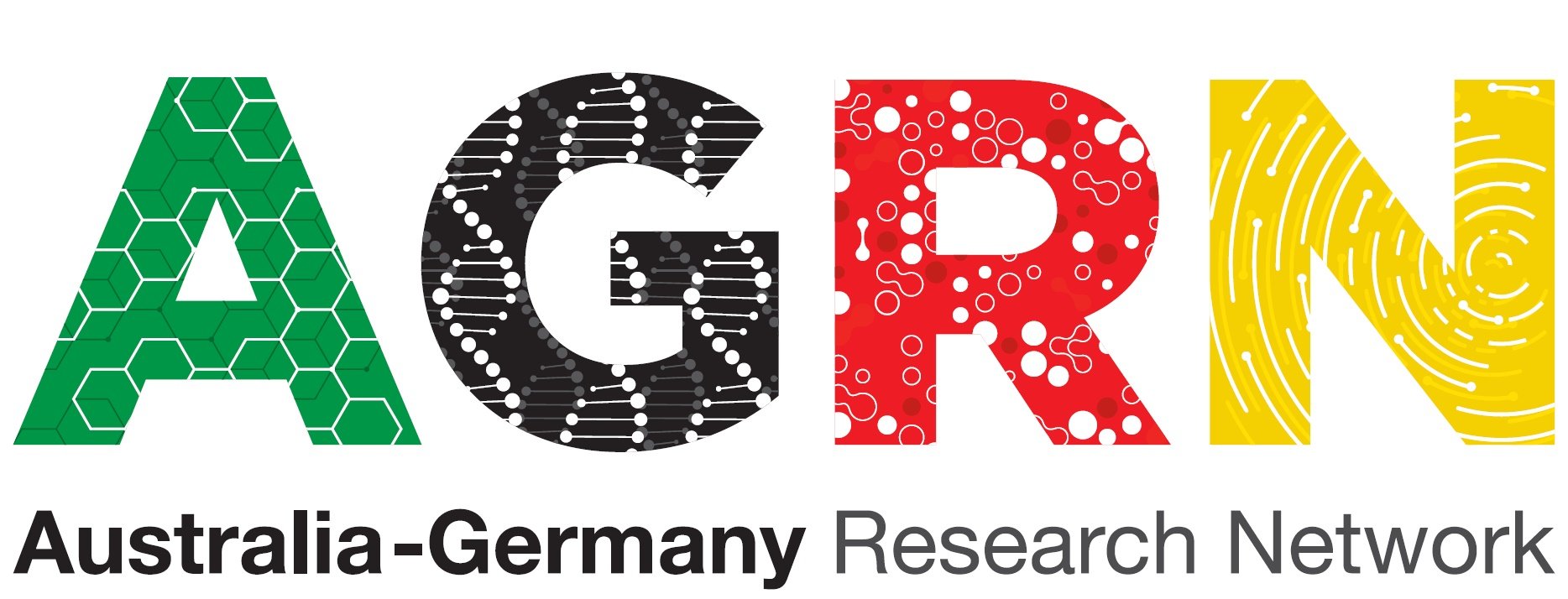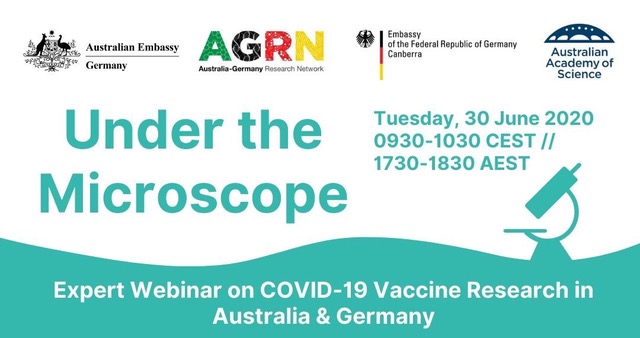
Australia's scientist are at the forefront of solving of the world's most pressing issues. At the Australian Embassy in Berlin, we engage with leading Australian scientists and researchers on a daily basis, sharing new research finds and exploring the best ways to connect Australian and German researchers and institutions. Learn more about some of our initiatives below.

Australia and Germany have extensive, high-calibre and longstanding research connections that continue to grow. The Australia-Germany Research Network strengthens existing research connections and provides a platform for developing new relationships. It is managed by the Australian Embassy in Berlin and German Embassy in Australia.
Learn more and join the network here.
.jpg)
Both Australia and Germany have long histories of space exploration and research. Australia was the third country in the world to build and launch a satellite from its own territory, and radio telescopes in Parkes and Canberra were instrumental in supporting the Apollo 11 moon landing. Our cooperation with Germany stretches back to the 1970s, when the German space agency launched rockets from South Australia. Australia now has one of the fastest growing space sectors in the world, with plans to triple the size of the industry by 2030, creating 20,000 jobs and turning it into a $12 billion sector. To achieve this, we need to rapidly scale up international partnerships, increase our national capability and inspire a future workforce.
As part of the Berlin Science Week 2020, the Australian Embassy hosted an expert webinar on our histories and expertise in space research, exploration and technology; our efforts to build a skilled and diverse space workforce, including our approaches to supporting women and girls in science; and existing and future avenues for Australia-Germany cooperation.
The webinar featured an emminent panel:
- Professor Anna Moore is at the forefront of the expansion of Australia’s space industry. She is director of the ANU Institute for Space (InSpace), the Advanced Instrumentation and Technology Centre and the National Space Test Facility at the ANU Mount Stromlo Observatory.
-
Professor Dr Hansjörg Dittus is a renowned expert in the fields of gravitation and fundamental physics. As the German Aerospace Centre (DLR) Executive Board Member for space research and technology, Professor Dittus plays a central role in planning and overseeing the implementation of the DLR space research program at the national, European and international level. He extensively promotes cooperative activities with Australian universities and institutions and was – before joining the DLR Executive Board – the director of the DLR Institute of Space Systems in Bremen, which analyses and evaluates complex space systems from a technical, economic and socio-political standpoint.
-
Professor Alan R Duffy is a research fellow at the Centre for Astrophysics and Computing at Swinburne University, where he creates simulated universes on supercomputers to understand how galaxies form and to probe the nature of dark matter. As project lead of SpaceTech Applications at Swinburne, he also works to find novel applications of the university’s astrophysical knowledge to business and society.
-
The discussion was moderated by Kumi Taguchi, an eminent Australian TV and radio host, writer, and speaker. Ms Taguchi is host of the ABC TV show Compass, and anchors major live events including Stargazing Live with Professor Brian Cox at Australia’s Siding Spring Observatory, and the Australian of the Year Awards.
You can tune into a podcast of the webinar here:
Want to learn more about Australia's space industry? Take a look at some further resources below:
- More information on Professor Moore and the Australian National University (ANU) Institute for Space (InSpace) can be found here. Online resources which may be of interest include a suite of virtual events hosted by ANU and InSpace to mark World Space Week; the Institute’s regular space law podcast; and Professor Moore’s participation in a discussion about exploring our universe, aimed at aspiring young astronomers.
- Further information on Professor Dr Dittus and the German Aerospace Centre (DLR) can be found here. DLR’s brochure on space research provides a useful overview of the impressive scope of the German space program. You can also find further information online on DLR-led missions, and DLR’s 20 space-related institutes and large-scale research facilities.
- You can learn more about Professor Duffy and Swinburne University’s Centre for Astrophysics and Supercomputing (CAS) here. CAS is one of Australia’s newest and fastest growing astronomy centres. The CAS website provides further information on their research priorities and plethora of publications, along with information on their national supercomputing facility OzSTAR. In 2013, Swinburne University, Film Victoria and the European Southern Observatory produced the award-winning 3D documentary film ‘Hidden Universe’, which takes audiences on an extraordinary journey deep into space. The film’s website is accessible here.
- Australia’s Civil Space Strategy was developed by the Australian Space Agency and outlines the Government’s plan to transform and grow our space industry over the coming decade. The strategy is built on four pillars: leveraging international partnerships; increasing national capability; promoting a responsible space sector culture; and inspiring and building a future workforce. The strategy is available for download here.
- Australia recently became one of eight founding countries to sign the Artemis Accords, paving the way for our participation in NASA’s plans to return to the moon and to travel to Mars. Further information is available in a press release issued by the Australian Space Agency.
- In September, Australia ratified the Square Kilometre Array Observatory Convention, and with it edged another step closer to helping create the world’s largest radio telescope. Construction is expected to commence in mid-2021, with Western Australia to host 130,000 antennas and South Africa to host 200 dishes. The Square Kilometre Array (SKA) will enable astronomers to survey the sky at rates much faster than any system currently in existence, with the scale of the project representing a huge leap forward in both engineering and R&D. The SKA project includes participation from 15 countries, including Germany. A media release from Australia’s Minister for Industry, Science and Technology, the Hon Karen Andrews MP, is available here, and a video providing more information on the project here.
- Finally, Australia will host the 43rd Scientific Assembly of the Committee on Space Research – COSPAR – the premier international space conference, in January 2021. To be held as a hybrid event for the first time, COSPAR 2021 will reach a broader audience than ever before possible. Find out more and register to attend virtually at cospar2020.org.

The Australian Embassy Berlin, German Embassy in Canberra, Australian Academy of Science and the AGRN cooperated on an expert webinar discussing German and Australian approaches to developing and delivering a COVID-19 vaccine. The webinar featured esteemed panellists, Laureate Prof. Peter Doherty and Prof. Dr. Marylyn Addo, UKE Hamburg
Learn more about the webinar content here.
The Falling Wall Conference, which was first held on the anniversary of the fall of the Berlin Wall in 2009, aims to breakdown walls and barrieres in the ways we think and act. Every year on 9 November, some of the most prominent researchers and scientists are invited to Berlin to present their breakthroughs in science and provide solutions for gloabal challenges. Each participant presents their research for 15 minutes in a way that is easy to understand for both experts and anyone interested in science. In 2019, Australian researcher Rhys Pirie won the 2019 Young Innovator of the Year Award and 2020 looks like another promising year for Australians with more than ten Australian researchers making it into the final.
- Alan Robertson: Genetics for Doctors
- Maria del Mar Palacios: Nature-based Finance
- Viraj Agnihotri: Deafness and Augmented Bionics
- Peter Macreadie: Climate Change
- Simon Illingworth: Science and Poetry
- Drew Berry: Molecular Nature
- Rufus Black: Universities and the Societes that They Serve
- Andrew Law: Ineffective Cancer Treatments
- Andrew Higgins: Limitations on Big Data
- Megan cordill: Indestructible Electronics
Make sure to watch the finals of this prestigious competition online and check out some of the many Australian contributions below:
- Alan Robertson: Genetics for Doctors
- Maria del Mar Palacios: Nature-based Finance
- Viraj Agnihotri: Deafness and Augmented Bionics
- Peter Macreadie: Climate Change
- Simon Illingworth: Science and Poetry
- Drew Berry: Molecular Nature
- Rufus Black: Universities and the Societes that They Serve
- Andrew Law: Ineffective Cancer Treatments
- Andrew Higgins: Limitations on Big Data
- Megan cordill: Indestructible Electronics
